Ginger Tea: A Natural Remedy for Period Bloating – An Indian Youth’s Guide
Menstrual cycles can be challenging, with cramps, mood swings, and the infamous bloating making it hard to function at your best.
If you’re an Indian youth juggling studies, work, and social commitments, the added discomfort of period bloating can feel like an unwelcome guest. But what if the solution lies in your kitchen?
According to age-old wisdom—something our mothers have always known—ginger tea is a simple, effective remedy for easing period bloating.
This blog delves into why ginger tea is a go-to solution for menstrual bloating and how it aligns with the lifestyle of Indian youth. Let’s explore how this golden elixir can make your period days a little easier.
Understanding Period Bloating
Period bloating occurs due to hormonal fluctuations, particularly increased levels of estrogen and progesterone. These hormones cause water retention, which leads to a feeling of puffiness or tightness, especially around the abdomen.
While bloating is a normal part of the menstrual cycle, it can be uncomfortable and frustrating.
Why Do Indian Youth Face More Challenges?
As a young Indian, you may already have a hectic lifestyle, balancing academics, work, or other responsibilities. Add to this the cultural expectations and dietary habits that sometimes lean heavily on processed foods, salt, or caffeine—all of which can exacerbate bloating.
Furthermore, in many Indian households, discussing menstruation with male family members is still considered taboo. Some deeply ingrained cultural practices also restrict women during their menstrual cycle, such as not allowing them to enter the kitchen or sleep in a proper bed.
These emotionally distressing practices can, in turn, cause stress, leading to the release of cortisol, a stress hormone that worsens physical discomfort, including bloating.
This is where natural remedies like ginger tea can make a significant difference.
Why Ginger Tea Works Wonders for Period Bloating
1. Anti-inflammatory Properties
Ginger contains powerful anti-inflammatory compounds called gingerols and shogaols. These help reduce the inflammation in the gut, relieving bloating and soothing abdominal discomfort.
2. Promotes Digestive Health
Bloating often stems from digestive issues like slow metabolism or gas buildup. Ginger tea stimulates the digestive enzymes, aiding in faster digestion and reducing gas.
3. Diuretic Effect
Ginger tea has mild diuretic properties that help flush out excess water from the body, reducing water retention and puffiness.
4. Hormonal Balance
Ginger may also play a role in regulating hormones, helping reduce the severity of period symptoms, including bloating, cramps, and mood swings.
5. Warmth and Comfort
A hot cup of ginger tea provides warmth and relaxation, which can ease period discomfort and elevate your mood during challenging days.
Ginger Tea for Period Bloating: Step-by-Step Approach with External Resources
Here’s how you can implement ginger tea as a remedy for period bloating, broken down into actionable steps. Additionally, external links provide deeper insights and credibility.
Step 1: Understand the Science Behind Ginger and Menstrual Health
Before diving into remedies, it’s helpful to understand why ginger is effective for bloating and menstrual discomfort. Research confirms its anti-inflammatory, digestive, and hormone-regulating properties.
External Resources:
Step 2: Gather Ingredients
Head to your kitchen or a local grocery store to gather the following ingredients:
- Fresh ginger root
- Water
- Optional: honey, lemon, or additional spices like cardamom
External Resources:
- BBC Good Food: Why Fresh Ginger Is Better Than Powder
- Times of India: Ginger Benefits in Indian Cooking
Step 3: Prepare Ginger Tea
Follow this quick recipe:
- Boil 2 cups of water in a pan.
- Grate or thinly slice 1-2 inches of fresh ginger.
- Add the ginger to the boiling water and let it simmer for 5-7 minutes.
- Strain the tea into a cup.
- Add a teaspoon of honey or a squeeze of lemon for extra flavor.
External Resources:
Step 4: Drink Responsibly
Consume ginger tea once or twice a day during your menstrual cycle. Avoid drinking excessive amounts, as it can lead to acidity or heartburn in some individuals.
External Resources:
Step 5: Pair Ginger Tea with Lifestyle Adjustments
For maximum relief, complement ginger tea with:
- Hydration: Drink at least 2-3 liters of water daily.
- Diet: Include fiber-rich foods and avoid salty snacks.
- Light Exercise: Try yoga or gentle stretching exercises.
External Resources:
Step 6: Monitor the Results
Keep track of how ginger tea affects your period symptoms over a few cycles. If the bloating significantly reduces, incorporate it into your routine. However, if symptoms persist, consult a healthcare provider.
External Resources:
- WebMD: When to See a Doctor for Menstrual Symptoms
- National Library of Medicine: Gut Health and Hormonal Cycles
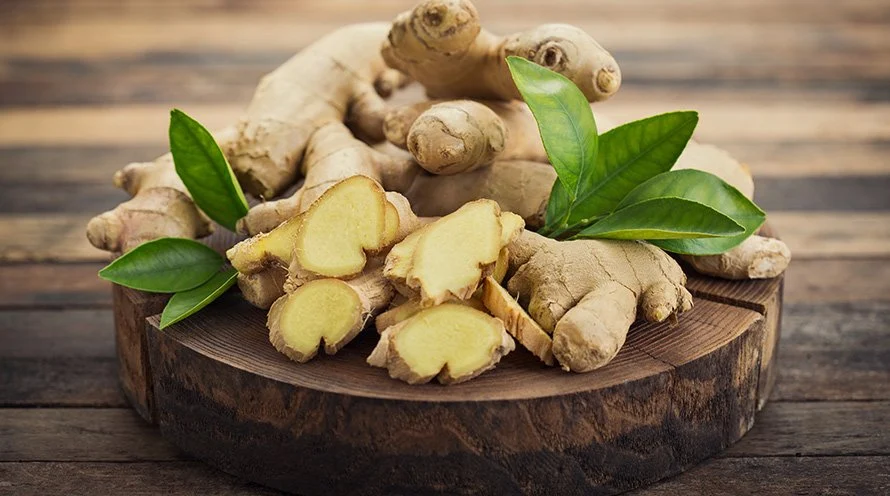
Quick Overview of the Steps to Use Ginger Tea for Period Bloating
- Understand the Science Behind Ginger
Ginger’s anti-inflammatory and digestive properties make it effective for easing period bloating. Its ability to regulate hormones also helps reduce discomfort during your menstrual cycle. - Gather the Ingredients
You’ll need fresh ginger root, water, and optional ingredients like honey, lemon, or cardamom for added flavor. - Prepare Ginger Tea
Boil 2 cups of water, add grated or sliced ginger, and let it simmer for 5-7 minutes. Strain into a cup and add honey or lemon if desired. - Drink Responsibly
Drink ginger tea once or twice a day during your period, but avoid overconsumption to prevent acidity or heartburn. - Pair with Lifestyle Adjustments
Stay hydrated, eat fiber-rich foods, and engage in light exercise like yoga to enhance the effectiveness of ginger tea in reducing bloating. - Monitor the Results
Track how your symptoms change over a few cycles. If bloating decreases, continue using ginger tea. If symptoms persist, consult a healthcare provider.
By following these simple steps, you can naturally manage period bloating and stay connected to time-tested, culturally rooted remedies.
When and How Often Should You Drink Ginger Tea?
For best results, drink ginger tea:
- 1-2 times a day during your menstrual cycle, especially when bloating is at its peak.
- First thing in the morning on an empty stomach or in the evening for a calming effect.
Avoid overconsumption, as too much ginger can sometimes cause heartburn or acidity.
The Cultural Connection: Wisdom Passed Down
In Indian households, natural remedies like ginger tea have been trusted for generations. Whether it’s curing a sore throat or soothing an upset stomach, ginger holds a revered place in Ayurvedic medicine. Our mothers and grandmothers often know the value of these age-old practices, even when modern science is just catching up.
As Indian youth, incorporating these traditional remedies into your lifestyle allows you to stay connected to your roots while addressing modern-day health challenges.
Why Ginger Tea Fits the Lifestyle of Indian Youth
- Quick and Easy to Prepare: With minimal ingredients and effort, ginger tea can be made in minutes, making it perfect for busy students or young professionals.
- Affordable and Accessible: Ginger is readily available in most Indian kitchens, making this remedy cost-effective and convenient.
- Customizable Flavor: You can experiment with add-ons like cardamom, cinnamon, or tulsi to suit your taste preferences.
- Holistic Wellness: Beyond bloating, ginger tea helps with cramps, nausea, and even stress—common challenges faced by Indian youth.
Additional Tips to Combat Period Bloating
While ginger tea is an excellent remedy, combining it with a healthy lifestyle can enhance its effects:
- Stay Hydrated: Drink plenty of water to prevent water retention.
- Reduce Salt Intake: Avoid salty snacks, which can worsen bloating.
- Eat Fiber-Rich Foods: Include fruits, vegetables, and whole grains in your diet to promote digestion.
- Exercise Gently: Yoga and light stretches can help alleviate bloating and cramps.
- Limit Caffeine: Replace coffee with herbal teas like ginger, chamomile, or peppermint during your period.
Conclusion: A Cup of Comfort
Ginger tea is more than just a beverage—it’s a cup of comfort, offering relief from period bloating and other menstrual woes. As an Indian youth navigating the complexities of modern life, embracing this traditional remedy can be a game-changer for your overall well-being.
The next time your period brings along bloating, listen to your mom’s advice and brew yourself a warm, soothing cup of ginger tea. It’s a small act of self-care that can make a big difference.
So, why wait? Give ginger tea a try and experience its magical benefits for yourself!
Disclaimer:
The information provided in this blog is intended for general informational purposes only. While ginger tea has been traditionally used in Ayurvedic medicine and has some proven health benefits, it should not be considered a substitute for professional medical advice, diagnosis, or treatment. Always consult with a healthcare provider before making any significant changes to your diet, especially if you have underlying health conditions or are taking medications.
Individual results may vary, and excessive consumption of ginger can lead to side effects such as heartburn or gastrointestinal discomfort. Please consume ginger tea in moderation.
The external resources linked in this article are for reference purposes and do not necessarily reflect the views or recommendations of the author.
-
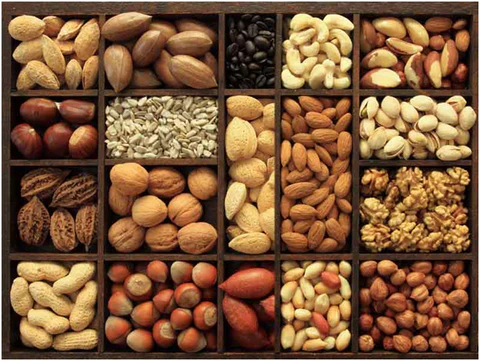
10 best dry fruits and nuts for your lazy evenings.
Here are nine dry fruits that are perfect for enjoying during lazy evenings, along with their health benefits:
1. Almonds
Why Almonds Are Good for Your Health
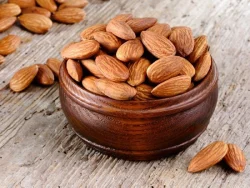
Benefits:
- Rich in Nutrients:
Almonds are high in antioxidants, vitamin E, protein, and fiber.
(Healthline) - Heart Health:
Regular consumption of almonds can lower LDL (bad cholesterol) levels and reduce the risk of heart disease.
(Medical News Today) - Weight Management:
Almonds’ high protein and fiber content can help with weight management by promoting satiety.
(EatingWell) - Brain Health:
Almonds contain riboflavin and L-carnitine, which support cognitive function.
(Verywell Health) - Skin and Hair Health:
The vitamin E and antioxidants in almonds promote healthy skin and hair.
(Verywell Health)
Serving Size:
- A typical serving size is 28 grams, which is about 23 almonds.
(Nutritionix)
Nutritional Highlights (per 28g serving):
- Calories: Approximately 164 kcal
(Nutritionix) - Protein: 6 grams
(Nutritionix) - Fiber: 4 grams
(Nutritionix) - Vitamin E: 35% of the Daily Value (DV)
(Healthline) - Magnesium: 20% of the DV
(Healthline)
Incorporating almonds into your diet can contribute to overall health, but it’s essential to consume them in moderation due to their calorie density.
2. Cashewnuts
Why Cashew Nuts Are Good for Your Health
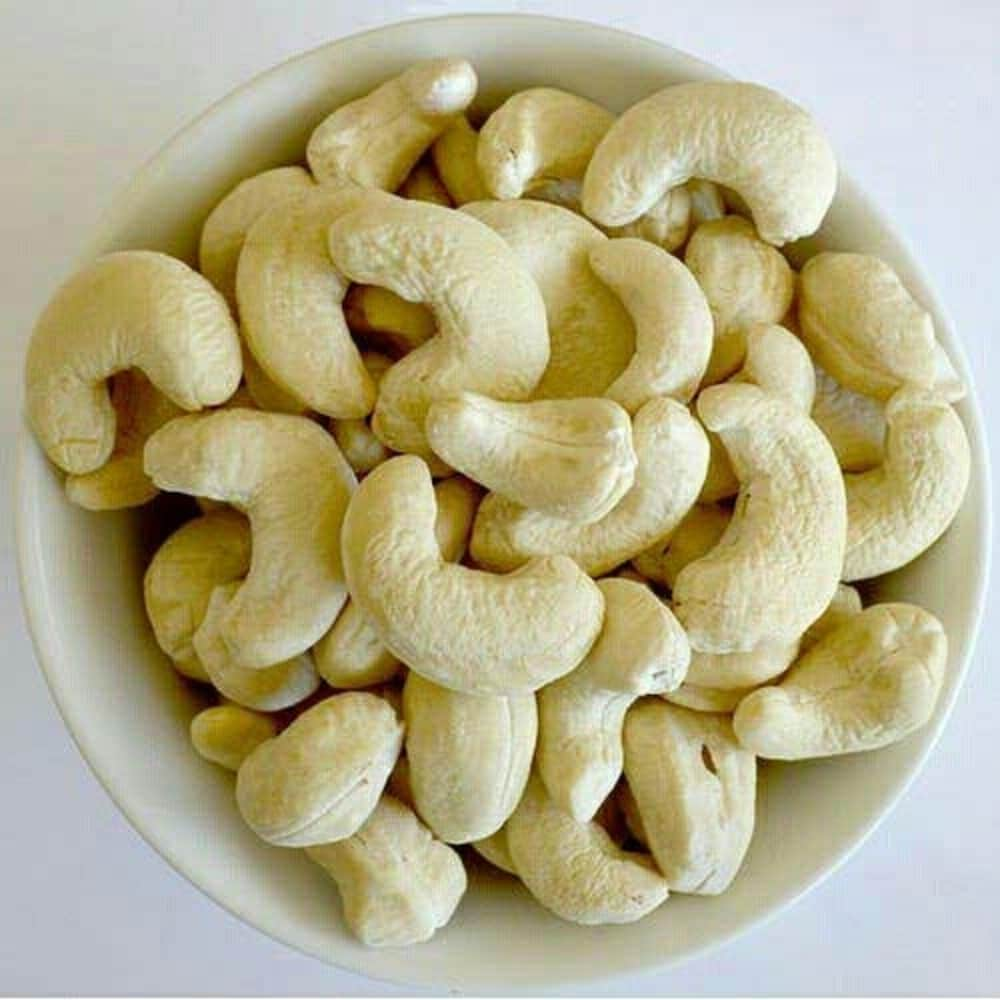
Benefits:
- Heart Health:
Cashews are rich in monounsaturated fats, which help reduce bad cholesterol (LDL) and improve heart health. They also provide magnesium and copper, which support overall cardiovascular function.
(Healthline) - Rich in Antioxidants:
Cashews contain antioxidants like vitamin E and selenium, which protect the body from oxidative stress, reduce inflammation, and may lower the risk of chronic diseases such as heart disease and cancer.
(PubMed) - Supports Bone Health:
Cashews are an excellent source of magnesium and calcium, both essential for maintaining strong bones and preventing bone-related disorders like osteoporosis.
(Medical News Today) - Promotes Healthy Weight Management:
Despite being calorie-dense, cashews can help with weight management. Their healthy fats, protein, and fiber content contribute to feelings of fullness and prevent overeating.
(Verywell Fit) - Supports Brain Function:
Cashews contain zinc, which is important for brain health and cognitive function. Zinc deficiency has been linked to memory and mood disorders, so including cashews in your diet can help maintain mental sharpness.
(PubMed) - Boosts Immunity:
Cashews are a good source of zinc, which plays a vital role in maintaining a strong immune system and fighting off infections.
(Harvard Health)
Serving Size:
- A typical serving size is about 1 ounce (28 grams), which is approximately 18 cashews.
(Nutritionix)
Nutritional Highlights (per 28g serving):
- Calories: Approximately 157 kcal
(Nutritionix) - Protein: 5 grams
(Nutritionix) - Fiber: 1 gram (4% of the Daily Value)
(Healthline) - Potassium: 5% of the Daily Value
(Verywell Fit) - Magnesium: 20% of the Daily Value
(Medical News Today)
Incorporating cashews into your diet can promote heart health, enhance brain function, support bone health, and boost immunity. They make a great snack on their own, or can be added to salads, stir-fries, or desserts!
3. Walnuts
Why Walnuts Are Good for Your Health
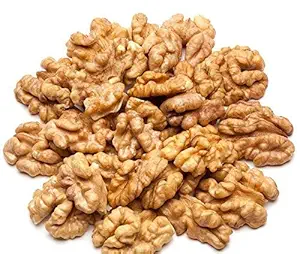
Benefits:
- Rich in Omega-3 Fatty Acids:
Walnuts are an excellent source of plant-based omega-3 fatty acids, which support heart health and reduce inflammation.
(Healthline) - Brain Health:
Rich in polyphenolic compounds and DHA, walnuts improve cognitive function and reduce the risk of neurodegenerative diseases.
(Medical News Today) - Heart Health:
Regular consumption of walnuts can lower LDL cholesterol, improve endothelial function, and reduce blood pressure.
(Harvard Health) - Gut Health:
Walnuts support the growth of beneficial gut bacteria, enhancing digestive health.
(Science Daily) - Cancer Prevention:
Antioxidants and anti-inflammatory compounds in walnuts may reduce the risk of certain cancers, such as breast and prostate cancer.
(PubMed)
- Serving Size:
- A typical serving size is 28 grams, which is about 14 walnut halves.
(Nutritionix)
- A typical serving size is 28 grams, which is about 14 walnut halves.
- Nutritional Highlights (per 28g serving):
- Calories: Approximately 185 kcal
(Nutritionix) - Protein: 4 grams
(Nutritionix) - Fiber: 2 grams
(Nutritionix) - Omega-3 Fatty Acids: 2.5 grams
(Healthline) - Magnesium: 11% of the Daily Value (DV)
(Harvard Health)
Incorporating walnuts into your diet can support heart, brain, and gut health, but they are calorie-dense, so moderation is key.
4. Pistachios
Why Pistachios Are Good for Your Health
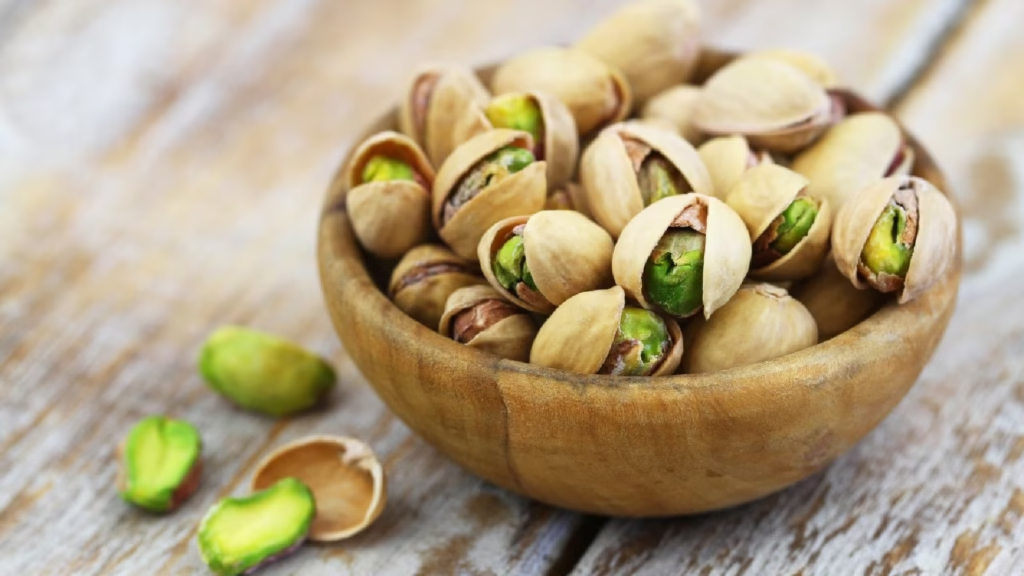
Benefits:
- Rich in Nutrients:
Pistachios are packed with vitamins, minerals, and antioxidants, including vitamin B6, potassium, and lutein.
(Healthline) - Heart Health:
Pistachios help lower LDL cholesterol and improve HDL cholesterol levels, promoting heart health.
(American Heart Association) - Weight Management:
Low in calories but high in protein and fiber, pistachios help curb hunger and support weight loss.
(Medical News Today) - Eye Health:
Contains lutein and zeaxanthin, antioxidants that protect against age-related macular degeneration (AMD).
(PubMed) - Blood Sugar Control:
Pistachios have a low glycemic index and help regulate blood sugar levels, making them great for diabetics.
(Diabetes Care Journal)
- Serving Size:
- A typical serving size is 28 grams, which is about 49 pistachios (unshelled).
(Nutritionix)
- A typical serving size is 28 grams, which is about 49 pistachios (unshelled).
- Nutritional Highlights (per 28g serving):
- Calories: Approximately 159 kcal
(Nutritionix) - Protein: 6 grams
(Nutritionix) - Fiber: 3 grams
(Nutritionix) - Vitamin B6: 28% of the Daily Value (DV)
(Healthline) - Potassium: 8% of the DV
(Healthline)
Adding pistachios to your diet can support heart health, aid in weight management, and enhance vision and blood sugar control. Enjoy them in moderation for optimal health benefits!
5. Dried Figs
Why Dried Figs Are Good for Your Health
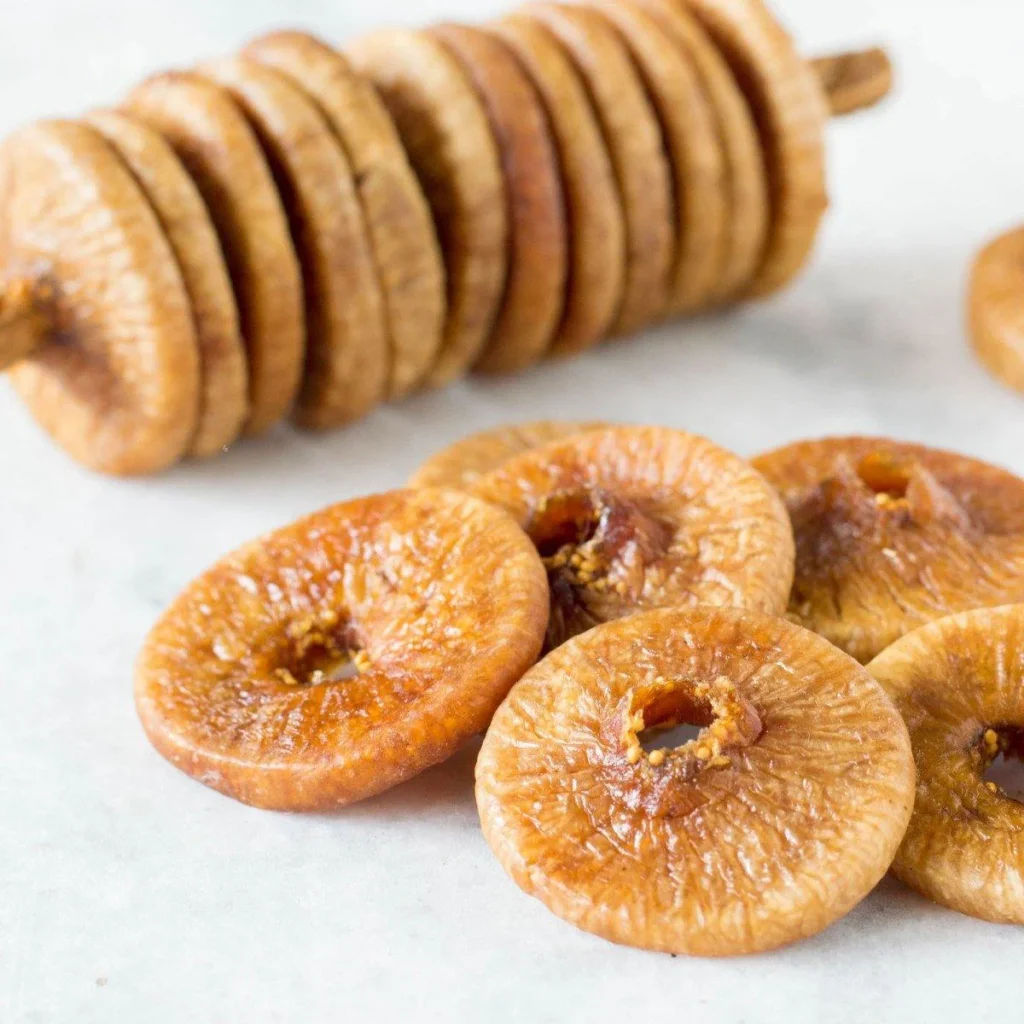
Benefits:
- Rich in Dietary Fiber:
Dried figs are an excellent source of fiber, aiding digestion, preventing constipation, and promoting gut health.
(Healthline) - Bone Health:
High in calcium, magnesium, and phosphorus, dried figs support bone density and strength.
(Medical News Today) - Rich in Antioxidants:
Packed with polyphenols and other antioxidants, dried figs protect against oxidative stress and reduce inflammation.
(PubMed) - Heart Health:
The potassium content in figs helps regulate blood pressure, while their antioxidants may reduce the risk of heart disease.
(Science Daily) - Natural Energy Booster:
Dried figs contain natural sugars like glucose and fructose, providing an energy boost and reducing fatigue.
(Verywell Fit)
- Serving Size:
- A typical serving size is about 40 grams (4-5 dried figs).
(Nutritionix) - Nutritional Highlights (per 40g serving):
- Calories: Approximately 100 kcal
(Nutritionix) - Protein: 1 gram
(Nutritionix) - Fiber: 4 grams (16% of the Daily Value)
(Healthline) - Calcium: 6% of the Daily Value
(Verywell Fit) - Potassium: 7% of the Daily Value
(Medical News Today)
Incorporating dried figs into your diet can support digestive health, strengthen bones, and improve heart function. Enjoy them as a healthy snack or add them to your meals!
6. Dates
Why Dates Are Good for Your Health
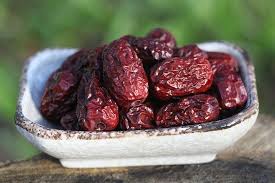
Benefits:
- Rich in Natural Sugars:
Dates are a great source of natural sugars like glucose, fructose, and sucrose, providing a quick energy boost.
(Healthline) - High in Fiber:
Dates promote healthy digestion, prevent constipation, and support gut health due to their high fiber content.
(Medical News Today) - Rich in Antioxidants:
Packed with flavonoids, carotenoids, and phenolic acid, dates help reduce inflammation and protect against chronic diseases.
(PubMed) - Heart Health:
Dates help regulate cholesterol levels and blood pressure due to their potassium and magnesium content.
(Harvard Health) - Bone Health:
Contain essential minerals like calcium, phosphorus, and magnesium, which support bone density and strength.
(Verywell Fit) - Natural Labor Aid:
Eating dates during pregnancy has been shown to promote cervical dilation and reduce the need for labor induction.
(PubMed)
- Serving Size:
- A typical serving size is about 40 grams (2-3 medium dates).
(Nutritionix) - Nutritional Highlights (per 40g serving):
- Calories: Approximately 120 kcal
(Nutritionix) - Protein: 1 gram
(Nutritionix) - Fiber: 3 grams (12% of the Daily Value)
(Healthline) - Potassium: 7% of the Daily Value
(Verywell Fit) - Magnesium: 6% of the Daily Value
(Medical News Today)
Incorporating dates into your diet can improve digestion, support heart and bone health, and provide a natural energy boost. They’re a versatile snack that can be enjoyed on their own or added to desserts and meals!
8. Apricots
Why Apricots Are Good for Your Health
Benefits:
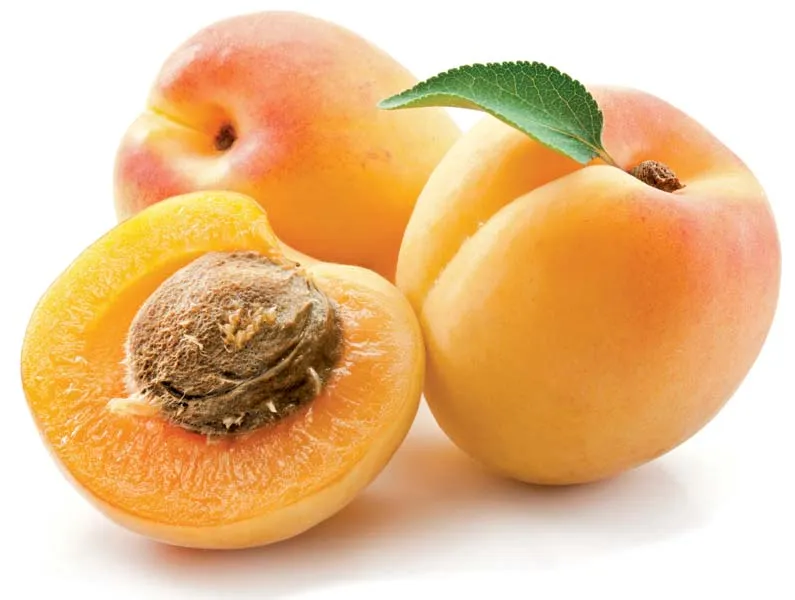
- Rich in Vitamins:
Apricots are an excellent source of vitamin A (in the form of beta-carotene), which is essential for eye health, immune function, and skin health.
(Healthline) - High in Fiber:
Apricots are a good source of dietary fiber, which promotes digestive health, helps prevent constipation, and supports gut microbiome balance.
(Medical News Today) - Rich in Antioxidants:
Packed with antioxidants like beta-carotene, lutein, and vitamin C, apricots protect the body against oxidative stress, inflammation, and chronic diseases.
(PubMed) - Heart Health:
Apricots contain potassium, which helps regulate blood pressure, and fiber, which aids in lowering cholesterol, both contributing to improved heart health.
(Harvard Health) - Skin Health:
The high vitamin A content in apricots supports healthy skin by promoting cell turnover and reducing the appearance of wrinkles and blemishes.
(Verywell Fit) - Boosts Immune System:
Apricots are rich in vitamin C, an essential nutrient for maintaining a strong immune system and combating infections.
(PubMed)
- Serving Size:
- A typical serving size is about 4-5 apricots (depending on their size).
(Nutritionix) - Nutritional Highlights (per 100g serving):
- Calories: Approximately 48 kcal
(Nutritionix) - Protein: 1 gram
(Nutritionix) - Fiber: 2 grams (8% of the Daily Value)
(Healthline) - Potassium: 9% of the Daily Value
(Verywell Fit) - Vitamin C: 10% of the Daily Value
(Medical News Today)
Incorporating apricots into your diet can support your immune system, promote healthy digestion, protect against oxidative stress, and improve skin health. Enjoy them as a snack, add them to salads, or use them in desserts and dishes!.
8. Hazelnuts
Why Hazelnuts Are Good for Your Health
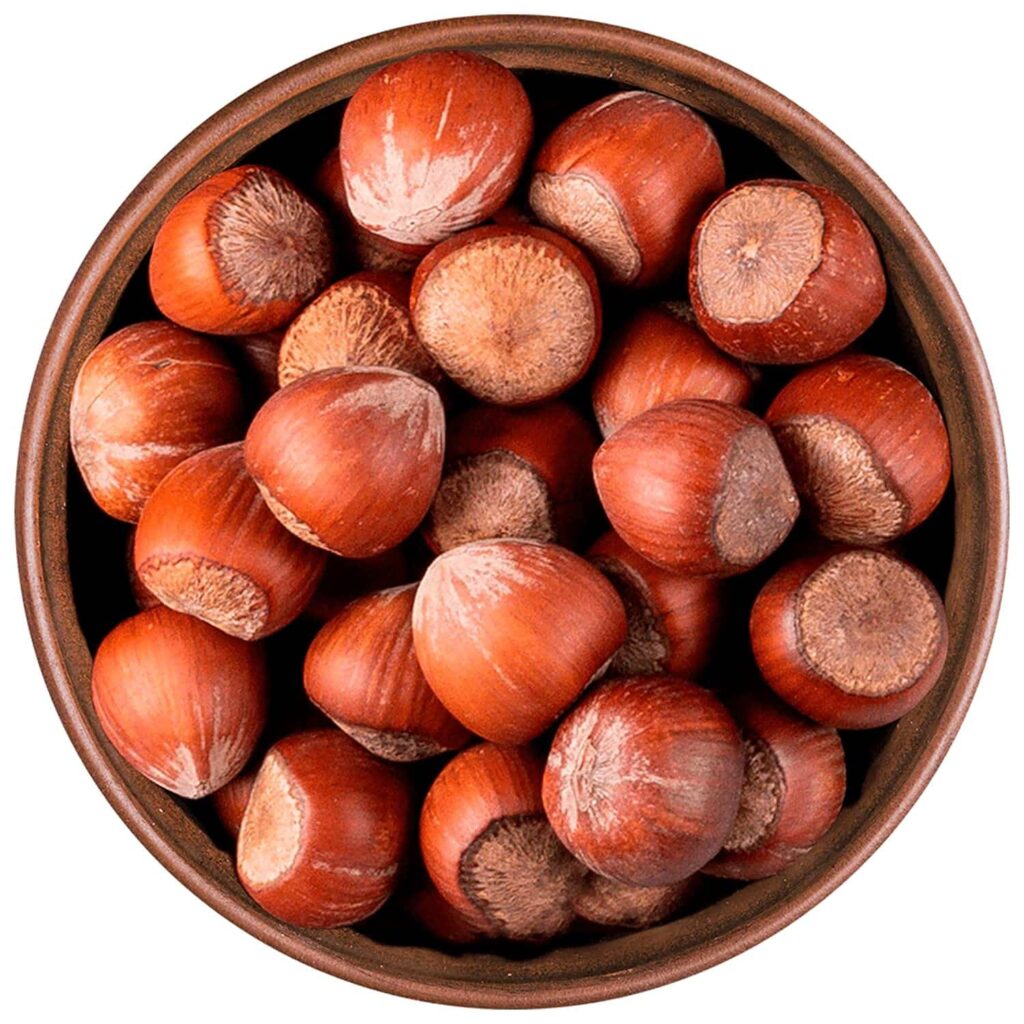
Benefits:
- Rich in Healthy Fats:
Hazelnuts are an excellent source of monounsaturated fats, which promote heart health by lowering bad cholesterol (LDL) levels and reducing the risk of heart disease.
(Healthline) - High in Antioxidants:
Hazelnuts are packed with antioxidants, including vitamin E and phenolic compounds, which protect cells from oxidative stress and reduce inflammation.
(PubMed) - Supports Brain Health:
The high content of vitamin E, thiamine, and healthy fats in hazelnuts contributes to cognitive function, helps prevent age-related cognitive decline, and supports overall brain health.
(Verywell Fit) - Rich in Protein and Fiber:
Hazelnuts provide plant-based protein and dietary fiber, which support muscle growth and repair and promote healthy digestion.
(Medical News Today) - Bone Health:
Hazelnuts are a good source of minerals like calcium, magnesium, and phosphorus, all of which are important for maintaining strong and healthy bones.
(Harvard Health) - Weight Management:
Due to their high fiber and healthy fat content, hazelnuts can help promote feelings of fullness and satiety, making them a beneficial addition to a weight management plan.
(PubMed)
- Serving Size:
- A typical serving size is about 28 grams (approximately 20 hazelnuts).
(Nutritionix)
- A typical serving size is about 28 grams (approximately 20 hazelnuts).
- Nutritional Highlights (per 28g serving):
- Calories: Approximately 176 kcal
(Nutritionix) - Protein: 4 grams
(Nutritionix) - Fiber: 3 grams (12% of the Daily Value)
(Healthline) - Potassium: 5% of the Daily Value
(Verywell Fit) - Magnesium: 8% of the Daily Value
(Medical News Today)
Incorporating hazelnuts into your diet can boost heart health, protect against oxidative damage, enhance brain function, and support digestion. Enjoy them as a snack, sprinkle them over salads, or use them in baking and desserts!
9. Dried Cherries
Why Dried Cherries Are Good for Your Health
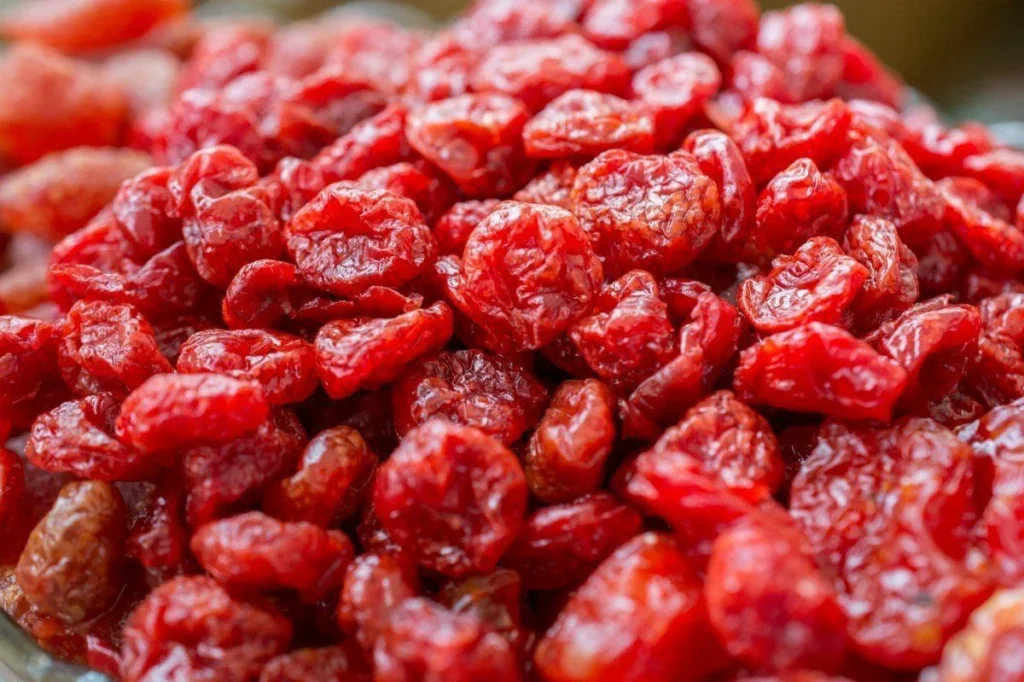
Benefits:
- Rich in Antioxidants:
Dried cherries are packed with antioxidants, especially anthocyanins, which help reduce inflammation, protect against oxidative stress, and may reduce the risk of chronic diseases like heart disease and diabetes.
(Healthline) - Supports Heart Health:
The high content of antioxidants, along with potassium and fiber, in dried cherries can help improve heart health by lowering blood pressure, reducing cholesterol levels, and promoting overall cardiovascular function.
(PubMed) - Improves Sleep Quality:
Dried cherries are a natural source of melatonin, a hormone that regulates sleep. Consuming dried cherries or cherry juice may help improve sleep quality, especially in individuals with insomnia or sleep disturbances.
(Medical News Today) - Anti-Inflammatory Effects:
Dried cherries contain compounds that have been shown to reduce markers of inflammation, which may benefit individuals with conditions like arthritis, gout, or muscle soreness.
(PubMed) - Boosts Immune Function:
Rich in vitamin C and other antioxidants, dried cherries help strengthen the immune system, protect against infections, and promote overall health.
(Verywell Fit) - Promotes Healthy Skin:
The antioxidants in dried cherries help protect the skin from damage caused by free radicals, supporting a healthy, youthful complexion and reducing the appearance of aging signs.
(PubMed)
- Serving Size:
- A typical serving size is about 1/4 cup (approximately 30 grams).
(Nutritionix)
- A typical serving size is about 1/4 cup (approximately 30 grams).
- Nutritional Highlights (per 30g serving):
- Calories: Approximately 120 kcal
(Nutritionix) - Protein: 1 gram
(Nutritionix) - Fiber: 2 grams (8% of the Daily Value)
(Healthline) - Potassium: 5% of the Daily Value
(Verywell Fit) - Vitamin C: 10% of the Daily Value
(Medical News Today)
Incorporating dried cherries into your diet can help protect against inflammation, support heart health, improve sleep, and boost your immune system. They make a great snack on their own or can be added to salads, baked goods, and yogurt!
10. Prunes
Why Prunes Are Good for Your Health
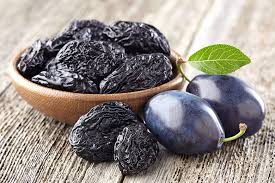
Benefits:
- Promotes Digestive Health:
Prunes are well-known for their ability to relieve constipation. They are high in fiber, particularly soluble fiber, and contain sorbitol, a natural laxative that helps improve bowel movements.
(Healthline) - Rich in Antioxidants:
Prunes are loaded with antioxidants, including phenolic compounds, which help protect the body from oxidative stress and reduce inflammation, lowering the risk of chronic diseases like heart disease and diabetes.
(PubMed) - Supports Bone Health:
Prunes are an excellent source of vitamin K and minerals like calcium and potassium, which are essential for maintaining healthy bones, improving bone density, and preventing bone loss.
(Medical News Today) - Helps Lower Cholesterol Levels:
The soluble fiber in prunes can help lower bad cholesterol (LDL) levels, improving heart health and reducing the risk of cardiovascular diseases.
(Verywell Fit) - Improves Skin Health:
The antioxidants, vitamins, and minerals in prunes help protect the skin from aging, promote hydration, and enhance the appearance of the skin by reducing wrinkles and fine lines.
(Harvard Health) - Regulates Blood Sugar Levels:
Prunes have a low glycemic index, which means they do not cause sharp spikes in blood sugar levels. This makes them a great option for individuals with diabetes or those looking to regulate their blood sugar.
(PubMed)
- Serving Size:
- A typical serving size is about 4-5 prunes (about 40 grams).
(Nutritionix)
- A typical serving size is about 4-5 prunes (about 40 grams).
- Nutritional Highlights (per 40g serving):
- Calories: Approximately 100 kcal
(Nutritionix) - Protein: 1 gram
(Nutritionix) - Fiber: 4 grams (16% of the Daily Value)
(Healthline) - Potassium: 6% of the Daily Value
(Verywell Fit) - Vitamin K: 18% of the Daily Value
(Medical News Today)
Incorporating prunes into your diet can improve digestion, support bone health, reduce inflammation, and enhance skin health. They are a delicious and nutritious snack or can be added to smoothies, cereals, and baked goods.
How to Use Dried Fruits and Nuts in Your Evening Snacks
Enjoy the goodness of dried fruits and nuts by incorporating them into delicious, nutrient-dense evening snacks. Here are some creative ways to combine these ingredients:
- Mix into Yogurt or Oatmeal
Add a handful of dried fruits like apricots, prunes, or cherries into your yogurt or oatmeal. This will not only enhance the flavor but also provide an extra boost of fiber and antioxidants to support digestion and overall health. - Create a Homemade Trail Mix
Combine dried fruits like raisins, cherries, or hazelnuts with nuts (such as almonds, cashews, or walnuts) and seeds (like sunflower or pumpkin seeds) to make a homemade trail mix. This balanced snack provides healthy fats, protein, and fiber to keep you full and satisfied. - Pair with Dark Chocolate
For a sweet treat, pair dried cherries, apricots, or prunes with pieces of dark chocolate. The combination of antioxidants from both the fruit and the chocolate makes this a satisfying and heart-healthy option. - Add to Smoothies
Blend dried fruits with fresh fruits, greens, and protein-rich ingredients like Greek yogurt or a plant-based protein powder. This smoothie will give you a naturally sweet, fiber-filled, and energy-boosting snack. - Make a Fruit Salad
Combine dried fruits with fresh fruits like berries, citrus, and apples for a refreshing, hydrating fruit salad. You can add a sprinkle of cinnamon or a drizzle of honey for added flavor. - Stuff Dates with Nut Butter
For a protein-packed, satisfying snack, stuff pitted dates with your choice of almond, peanut, or cashew butter. You can sprinkle some chia seeds or sea salt on top for extra texture and flavor. - Incorporate into Baked Goods
Add dried fruits like cherries, apricots, or raisins into homemade muffins, cookies, or granola bars. These dried fruits provide natural sweetness, and the addition of nuts or seeds enhances the flavor and texture. - Dried Fruit and Cheese Pairing
Create a savory-sweet pairing by adding dried fruits like apricots or figs to cheese platters. Go for creamy goat cheese or sharp cheddar for a balanced, satisfying snack that combines protein, healthy fats, and a touch of sweetness.
These simple and creative ideas allow you to enjoy the health benefits of dried fruits and nuts in a variety of flavorful ways. Mix and match ingredients to suit your taste and dietary preferences for an evening snack that’s both nourishing and delicious.
- Rich in Nutrients:
-

Kerala Chief ministers since 1957
Kerala, a small state at the southern tip of India, lies nestled between the majestic Western Ghats in the east and the Arabian Sea in the west.
The political dynamics of Kerala stand out as unique compared to other Indian states. Let’s take a look at the list of Kerala’s Chief Ministers starting from 1957
2. SHRI. PATTOM A. THANU PILLAI

Duration :February 22, 1960 – September 26, 1962
Party: Praja Socialist Party
Constituency: Thiruvananthapuram
3. SHRI. R. SANKAR

Duration : September 26, 1962 – September 10, 1964
Party: Indian National Congress
Constituency: Kannur
5. SHRI. C. ACHUTHA MENON

Duration : November 1, 1969 – August 1, 1970
Party: Communist Party of India
Constituency: Kottarakkara
8. SHRI. A.K. ANTONY

Duration : April 27, 1977 – October 27, 1978
Party: Indian National Congress
Constituency: Kazhakkuttom
9. SHRI. P.K. VASUDEVAN NAIR

Duration : October 29, 1978 – October 7, 1979
Party: Communist Party of India
Constituency: Alappuzha
10. SHRI. C.H. MOHAMMED KOYA

Duration : October 12, 1979 – December 1, 1979
Party: Indian Union Muslim League
Constituency: Malappuram
11. SHRI. E.K. NAYANAR

Duration : January 25, 1980 – October 20, 1981
Party: Communist Party of India
Constituency: Malampuzha
19. SHRI. OOMMEN CHANDY

Duration : August 31, 2004 AN – May 12, 2006
Party: Indian National Congress
Constituency: Puthuppally
-
Use lemon balm to get relief from mosquito bites, says my mom
A Mosquito Bite Solution Passed Down Through Generations
It can sometimes be incredibly difficult to sit on the balcony and enjoy the city view when you’re constantly distracted by the buzzing sound of mosquitoes around you. Personally, I’m not a fan of using chemical remedies to tackle this issue—I’m uncertain about the potential harm they may cause in the pursuit of comfort.
One of the most well-known ingredients used in my home to control mosquitoes was lemongrass oil. I can still vividly remember its refreshing aroma.
In this blog, we’ll explore the science, application, and broader uses of lemongrass oil to help prevent mosquito bites and soothe the irritation they cause.
The Science Behind How It Prevents Mosquito Bites
Lemongrass oil is extracted from a plant called Cymbopogon, and no—it’s not a combination of lemon and grass (as I mistakenly believed a few years ago). This plant is packed with potent components like citral and geraniol, which contribute to its effectiveness as a natural mosquito remedy.
Key Natural Properties of Lemongrass Oil
- Anti-Inflammatory: Reduces redness, swelling, and irritation caused by mosquito bites.
- Antiseptic: Keeps the bite area clean, preventing infections.
- Cooling Effect: Provides immediate relief from itching and discomfort.
- Mosquito Repellent: Effectively deters mosquitoes, minimizing further bites.
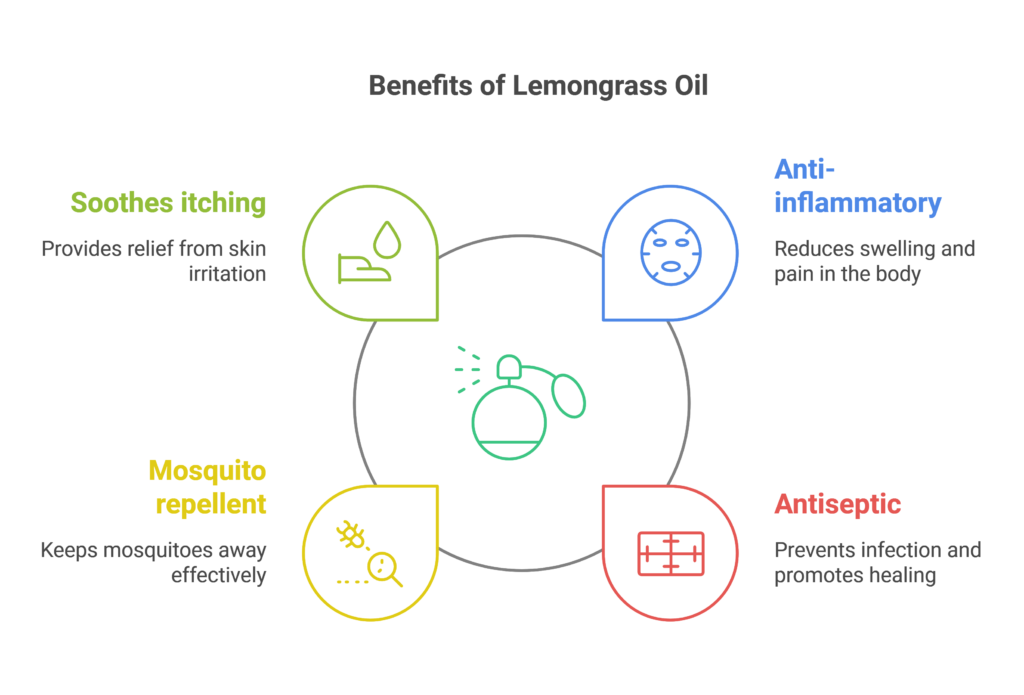
Lemongrass oil has been a part of my family’s natural remedies for generations, and I hope this blog helps you rediscover its benefits too!
Scientific Backing
There are numerous studies and research journals that confirm the anti-inflammatory and antimicrobial properties of lemongrass oil. It has been found to be as efficient as some chemical alternatives but with significantly fewer side effects.
How to Use Lemongrass Oil for Mosquito Bites
Step 1: Choose Your Carrier Oil
For those unfamiliar with lemongrass oil, it is often sold in a highly concentrated form in retail stores. Because of its potency, it’s essential to dilute it with a carrier oil before application.
Here are some commonly used carrier oils:
- Coconut Oil: Provides moisturizing and antimicrobial benefits.
- Jojoba Oil: Perfect for sensitive skin, as it mimics the skin’s natural oils.
- Argan Oil: A great option for oily or acne-prone skin due to its lightweight texture.
Diluting lemongrass oil not only ensures safe application but also enhances its benefits by combining it with the properties of the carrier oil.

Step 2: Prepare and Apply
Take a few drops of lemongrass oil and mix it with 1 teaspoon of your chosen carrier oil.
After cleaning the affected area with soap and water, gently massage the mixture onto the mosquito bite. The soothing properties of the oil will begin to work almost immediately, providing relief from itching and discomfort.
Step 3: Reapply as Needed
There’s no fixed regimen for how often this remedy should be used. However, as a rule of thumb, you can reapply the oil blend whenever there is persistent itching or irritation—up to three times a day for best results.a rule of thumb would be to used, when their is persisitent itching, reapply the oil blend up to three times a day.

Beyond Mosquito Bites: Multipurpose Uses of Lemongrass Oil
Lemongrass oil is versatile and offers numerous benefits:
- Aromatherapy: Diffuse it to alleviate stress and promote relaxation.
- Natural Mosquito Repellent: Mix with water to create a DIY spray for your home or skin.
- Skincare: Use it to soothe acne, fungal infections, or minor skin irritations.
- Digestive Health: Ingestible-grade lemongrass oil (only with proper guidance) may help with bloating and indigestion.
FAQs About Lemongrass Oil
1. Can I use lemongrass oil directly on my skin?
No, always dilute it with a carrier oil to avoid irritation or sensitivity.2. What’s the difference between lemongrass oil and citronella oil?
While both repel mosquitoes, citronella oil focuses on prevention, whereas lemongrass oil offers additional healing and anti-inflammatory benefits.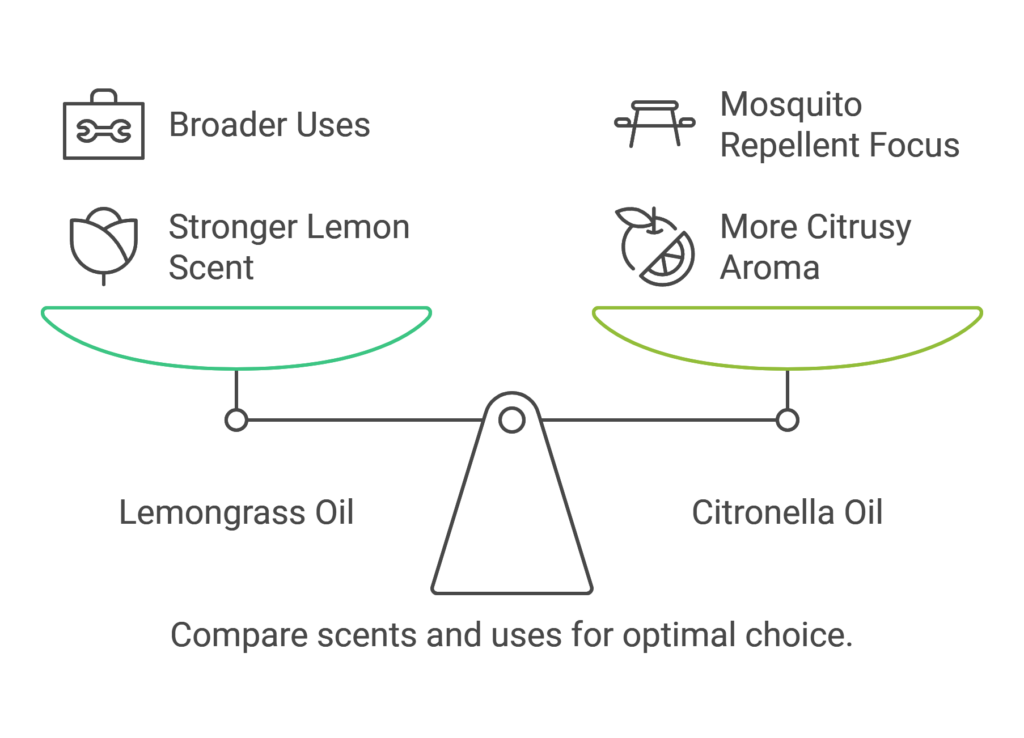
3. Can lemongrass oil be used on kids or pets?
Consult a pediatrician or veterinarian before applying lemongrass oil to children or animals, as it can be too potent for them.
When to See a Doctor
While lemongrass oil is effective for mild bites, seek medical attention if you notice:
- Severe swelling or redness.
- Pus, warmth, or other signs of infection.
- Systemic symptoms like fever or difficulty breathing.
Final Thoughts
Lemongrass oil, a remedy celebrated in both traditional wisdom and scientific research, is a safe, natural, and effective solution for mosquito bites. With its anti-inflammatory and antiseptic properties, it not only soothes but also heals. Whether you’re dealing with an itchy bite or seeking a multipurpose oil for your wellness routine, lemongrass oil is a must-have.
Disclaimer
This article is for informational purposes only and does not substitute professional medical advice. Always perform a patch test before use and consult a healthcare provider for specific concerns.




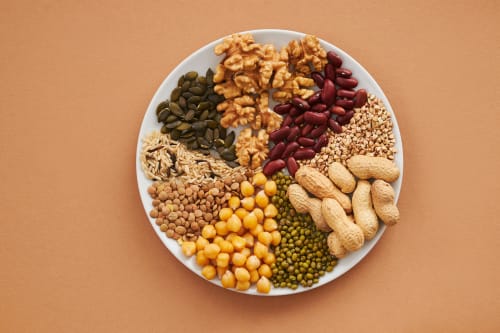





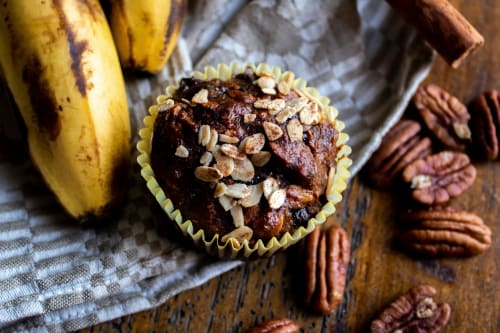
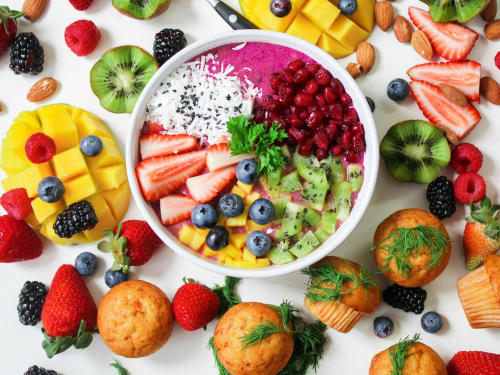

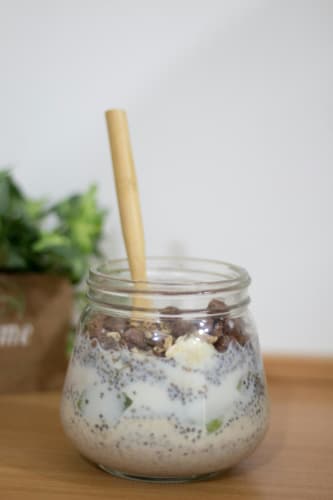
Leave a Reply to Period Bloating: 6 Natural Remedies to Feel Better | A Youth's Guide Cancel reply